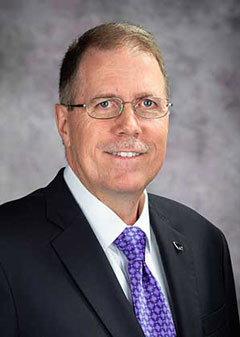April 3, 2019
Update on shadow year of new budget model

Dear K-State Community,
Since the new budget model was launched in August much has been accomplished. Colleges and units have been working through the model to understand how to strategically leverage its incentives.
We have established the oversight structure of the new model. The University Budget Planning Team and its Revenue and Service Center Working Groups have been hard at work at completing their shadow year tasks. These groups are working on the development of processes to review Service Center and Revenue Center funding requests. Additionally, progress has been made on the development of a process for benchmarking the budgets of Service Centers to peer institutions. Once completed, all recommendations will be forwarded to the Core Executive Team for consideration. Once approved, further communications will be provided to university leadership and in a future K-State Today article.
Based on the work of the Service Center Working Group, and approval by the Core Executive Team, we are moving forward with a phased implementation of the development of Service Level Agreements, or SLA, with all Service Centers. SLAs are intended to clearly articulate the levels and types of services funded by General Use dollars and provided by our Service Centers. This helps to communicate to campus the level and types of services provided and explains why additional levels of services requested by campus units may result in an additional charge.
An SLA also will assist the Service Center Working Group in defining levels of benchmarking when comparing our Service Centers to peer institutions. It also will play a role in understanding the impact of growing or reducing funding to Service Centers and the impact on the level of service that can be provided.
The Division of Communications and Marketing, Human Capital Services, Information Technology Services, and the Division of Facilities are the service center units included in the initial implementation phase. These units will complete an SLA and submit it to the Service Center Working Group where it will be reviewed. It is anticipated that these SLAs will be completed and posted to the Budget Modernization Project website at the beginning of the fiscal year.
To aid in the understanding of the new budget model, I am pleased to announce several learning opportunities in April. Eric Higgins, professor and associate dean of the College of Business Administration, will provide two sessions to interested deans and department heads who wish to better understand how to leverage the financial rewards of the new model as well as cultivating a culture of entrepreneurship which will further leverage the benefits of the model.
Dr. Higgins also will provide a third training for anyone who is interested in how faculty and staff can contribute to the success of the university through the new budget model. No prior knowledge of the budget model is necessary. The training will take place from 10-11:30 a.m. Wednesday, April 24, in Town Hall at the Leadership Studies Building. The training will be accessible via Zoom.
I wish to thank the members of the University Budget Planning Team as well as Dr. Higgins for all of their hard work this semester.
Sincerely,
Charles Taber
Provost and Executive Vice President
